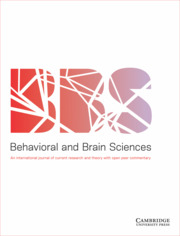Article contents
a dynamic developmental theory of attention-deficit/hyperactivity disorder (adhd) predominantly hyperactive/impulsive and combined subtypes
Published online by Cambridge University Press: 07 September 2005
Abstract
attention-deficit/hyperactivity disorder (adhd) is currently defined as a cognitive/behavioral developmental disorder where all clinical criteria are behavioral. inattentiveness, overactivity, and impulsiveness are presently regarded as the main clinical symptoms. the dynamic developmental behavioral theory is based on the hypothesis that altered dopaminergic function plays a pivotal role by failing to modulate nondopaminergic (primarily glutamate and gaba) signal transmission appropriately. a hypofunctioning mesolimbic dopamine branch produces altered reinforcement of behavior and deficient extinction of previously reinforced behavior. this gives rise to delay aversion, development of hyperactivity in novel situations, impulsiveness, deficient sustained attention, increased behavioral variability, and failure to “inhibit” responses (“disinhibition”).
a hypofunctioning mesocortical dopamine branch will cause attention response deficiencies (deficient orienting responses, impaired saccadic eye movements, and poorer attention responses toward a target) and poor behavioral planning (poor executive functions). a hypofunctioning nigrostriatal dopamine branch will cause impaired modulation of motor functions and deficient nondeclarative habit learning and memory. these impairments will give rise to apparent developmental delay, clumsiness, neurological “soft signs,” and a “failure to inhibit” responses when quick reactions are required.
hypofunctioning dopamine branches represent the main individual predispositions in the present theory. the theory predicts that behavior and symptoms in adhd result from the interplay between individual predispositions and the surroundings. the exact adhd symptoms at a particular time in life will vary and be influenced by factors having positive or negative effects on symptom development. altered or deficient learning and motor functions will produce special needs for optimal parenting and societal styles. medication will to some degree normalize the underlying dopamine dysfunction and reduce the special needs of these children. the theory describes how individual predispositions interact with these conditions to produce behavioral, emotional, and cognitive effects that can turn into relatively stable behavioral patterns.
Keywords
Information
- Type
- Research Article
- Information
- Copyright
- © 2005 cambridge university press
- 688
- Cited by

